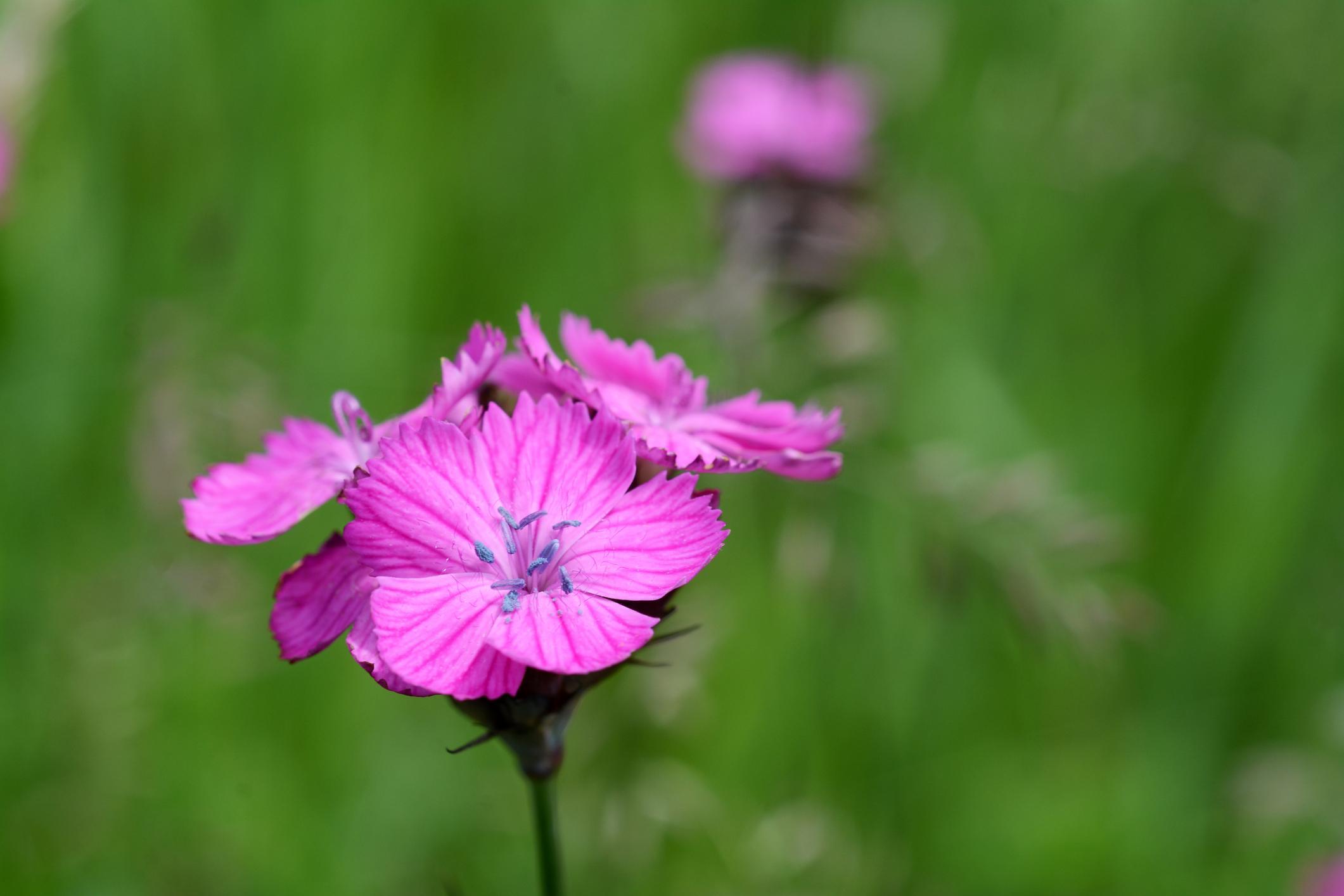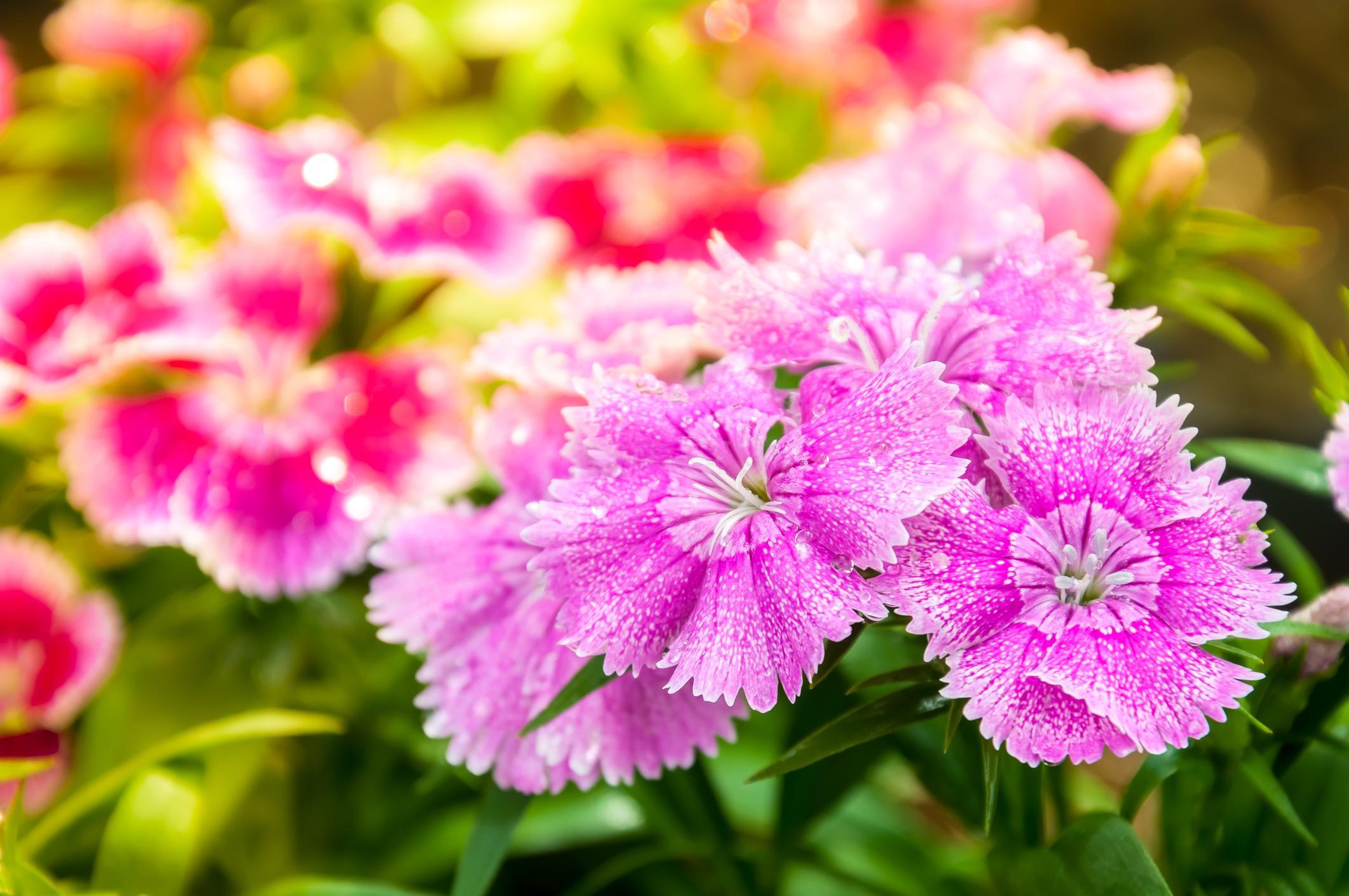Types of Carnations - Dianthus Plant Species


Some of the most common types of carnations are the Carthusian pink (Dianthus carthusianorum), common carnation (Dianthus caryophyllus), wild carnation (Dianthus broteri), sweet William (Dianthus barbatus), China pink (Dianthus chinensis) and many more that we share in this guide to the different types of Dianthus flowers.
Carnations are native to Eurasia, but have become popular in many places around the world with suitable climates for their growth. They are particularly popular in the Mediterranean, evidenced in the fact they are the national flower of Spain. All carnation types have certain similarities, such as their serrated petals and showy bouquet. There are also individual species with their own differences which we share at thedailyECO with our list of 17 types of carnations with photos.
- Carthusian pink (Dianthus carthusianorum)
- Common carnation (Dianthus caryophyllus)
- Wild carnation (Dianthus broteri)
- Gredos carnation (Dianthus gredensis)
- Sweet William (Dianthus barbatus)
- China pink (Dianthus chinensis)
- Common pink (Dianthus plumarius)
- Dianthus 'raspberry swirl' (Pink)
- Other types of carnations
- How to care for carnations
Carthusian pink (Dianthus carthusianorum)
This carnation is named after the Carthusian monks of the French Alps, who used it to treat rheumatism and muscle pain. Each monk had his own space in the garden and in it they grew these carnations. They are distributed from Spain and France, through to Italy, Poland, Slovakia, Greece and Turkey. Since of populations vary depending on the presence, or absence, of butterflies of the species Satyrus ferula and Melanargia galathea that pollinate them.
The plant can grow up to around 24"/60 cm in height. The flower heads are dense and the leaves are grass-like. They can be pink, magenta or white, with the characteristic toothed petals of carnations. They are a little more flattened and open than other types of carnations. It is used as an ornamental plant and for soil restoration since it tolerates heavy metals accumulated in the soil.
Carnations reproduce with seeds, a process you can understand in more detail with our guide to spermatophyte plants.

Common carnation (Dianthus caryophyllus)
This is the most common species of carnation and from which many varieties have been created. They grow in red, yellow, white, pink, or bicolor patterns. There are even cultivars with double petals. They have a particular aroma very similar to that of cloves. It produces very showy grayish-green or bluish-green linear leaves of ornamental value. As it matures, it develops a woody base. They get to measure up to 24"/60 cm in height.

Wild carnation (Dianthus broteri)
This type of carnation is endemic carnations to the Iberian Peninsula and have a peculiar appearance. The petals are highly branched at the margins and somewhat disheveled in appearance (see photo below). They can be white or pink, with dots and a yellow interior. Flowering occurs from March to July, and the stems are perennial. It is found in calcareous scrub and open grasslands, associated with dry climates.
Learn how to look after another type of perennial with our care guide for the Chinese bellflower plant.

Gredos carnation (Dianthus gredensis)
It is endemic to the Sierra de Gredos in Spain, and is distributed at altitudes 1,800 meters above sea level. It produces very tiny pink carnation flowers, barely 1 cm long and short stems 4"/10 cm in height, staying close to the ground and therefore often overlooked.

Sweet William (Dianthus barbatus)
Although their common name is the endearing sweet William, this is certainly one of the types of carnations and one of the most beautiful at that. They have colors such as purple, white, pink or red, although some have margins with different shades of color.
They give off a notably spicy aroma and stand out for having an open and flattened corolla which you can see in the photo below. These flowers are packed into clusters with up to 30 individual carnation flowers per stem. This makes them a great type of ornamental plant in the home, but their natural habitat is the mountainous areas of Asia and Europe.
Grow your own carnations with the link below to a great seed mix option for this type of flower:

China pink (Dianthus chinensis)
This carnation is native to China, Russia, Korea and Mongolia. It grows to 20"/50 cm in height and the corolla is open with 5 serrated petals on the margins. They can be red, magenta, white, or bicolor, and are usually 1-1.5"/3-4 cm in diameter. You can fill your garden with these type of carnations as they grow well outside in various climates. They are relatively easy to care for, but need to be in semi-shaded areas if the temperatures are warm.
Discover more beautiful plants with photos in our guide to the different types of hydrangeas.

Common pink (Dianthus plumarius)
It produces open, flattened pink corolla flowers. The stems grow from 12-24"/30-60 cm tall. It is native to Germany, Slovenia, Croatia, Italy and the United Kingdom. Flowering is prolonged and extends from spring to summer.

Dianthus 'raspberry swirl' (Pink)
As an example of man-made cultivars which have created new types of dianthus plant species includes the Dianthus ‘raspberry swirl’ so called due to its beautiful red and white petals. It is a dwarf variety with short stems 4-8"/10-20 cm long that grows compactly. It has a considerably extended flowering time beginning in April and ending in October. In addition, the variety was modified to obtain a deep magenta color with whitish spots. It was created in 1997 in the United Kingdom, obtained from crossing 100 different seedlings to find the special characteristics mentioned.

Other types of carnations
As you may be able to tell from some of the common names of these types of carnations, they are also sometimes known as pinks or variations of sweet William. All carnations are plants from the genus Dianthus, types of vascular flowering plants. Below we share some more species of carnations from the Dianthus genus:
- Seashore pink (Dianthus japonicus)
- Karoo pink (Dianthus caespitosus)
- Beauty's girdle (Dianthus callizonus)
- Frilly carnation (Dianthus mooiensis)
- Maiden pink (Dianthus deltoides)
- Rock pink (Dianthus petraeus)
- Cheddar pink (Dianthus gratianopolitanus)
- Knapp's carnation (Dianthus knappii)
- Deptford pink (Dianthus armeria)
You can see some photos of these types of carnations below:

How to care for carnations
Now you know what are some of the different types of carnations with photos of each, you may want to know how to care for them:
- Light: they require full sun exposure in cooler climates with high intensity light and long days. An indicator that there is a lack of light will be drooping or bent stems. In very hot climates, they will need periods of semi-shade.
- Irrigation: although considered somewhat drought resistant, they do need moderate watering. Around 1-2 per week depending on the heat levels.
- Soil: it must have good drainage when watering as it prevents the roots from rotting and allows for a good pant structure. A mixture of universal substrate based on peat and worm humus in equal parts is ideal. You can add vermiculite or tepojal in smaller quantities. You also need a medium pH for growth. You can add a little lime if the soil is too acidic.
- Fertilizer: for producing flowers it needs to be fertilized often. Once a week in spring and summer and once a month in autumn and winter.
Now that you know the different types of carnations, don't miss this article on white plants for the garden.

If you want to read similar articles to Types of Carnations - Dianthus Plant Species, we recommend you visit our Outdoor plants category.
- Kew Royal Botanical Gardens. (n.d.). Dianthus. Retrieved from: https://powo.science.kew.org/results?q=dianthus.
- Royal Horticultural Society (n.d.) Dianthus. Retrieved from: https://www.rhs.org.uk/plants/search-results?form-mode=true&query=carnation
- Whetman, J. (2003). US Patent Application No. 10/072,112.














